Volume 21, Issue 1
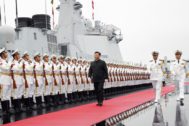
Regional Overview
January — April 2019Free and Open, but not Multilateral
We are focusing on regional trade and economics because it’s important to look at the consequences of the current US administration’s antipathy toward multilateral trade agreements. Beijing has shown no such hesitancy, with President Xi Jinping hosting visitors from more than 100 different countries (including 37 heads of state) at his Second Belt and Road Initiative (BRI) International Forum. Ships from 19 different navies (but not the US or France) participated in a naval flotilla commemorating the 70th anniversary of the Peoples’ Liberation Army Navy (PLAN). One area where Washington might actually embrace a multilateral agreement would be a follow-on to the soon-to-be defunct Intermediate Range Nuclear Forces (INF) Treaty but only if it involves, among others, China.

US - Japan
January — April 2019Treading Water in Choppier Surf
The US and Japanese governments continued to work at maintaining a steadfast alliance, yet there were issues that could upend the relationship. After several months of anticipation, there was some progress on trade negotiations. While the US hoped to close the deal before President Trump visits Japan in late May, differences over the scope of the agreement and a number of difficult issues related to automobiles, agriculture, and currency rates remained. Meanwhile, domestic pressure over the Futenma relocation project returned to the news with a new referendum that strongly rejected the move. The introduction of the Reiwa era at the end of April served as a brief respite as the alliance partners sought to align interests following the “no deal” US-DPRK summit in Hanoi.
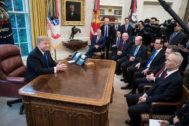
US - China
January — April 2019Is a Trade Deal Imminent?
Intense trade talks in the first four months of 2019 made progress, raising hopes that a deal will be reached in May, and signed by Presidents Donald Trump and Xi Jinping soon thereafter. Remaining sticking points include the enforcement mechanism, which is a key US demand, and a schedule for lifting the tariffs, which is a Chinese priority. The US Department of Justice unsealed an indictment charging Huawei and its CFO Meng Wanzhou with financial fraud, money laundering, obstruction of justice, sanctions violations, and other crimes. Tensions increased over Taiwan as the Trump administration took steps to strengthen ties with Taipei and warn Beijing to back off its coercive and destabilizing policies. President Trump welcomed China’s decision to add fentanyl-related substances to a supplementary list of controlled drugs and substances beginning May 1. Growing US concerns about Chinese espionage were highlighted publicly in speeches by senior Trump administration officials.
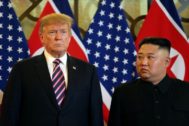
US - Korea
January — April 2019From Hanoi to Hiatus
Late February summitry gave way to stalemate, raising the specter of increased tension on the Korean Peninsula. President Donald Trump and North Korean Chairman Kim Jong Un signaled warmth around their Hanoi meeting – their second summit in a year – but Trump’s walkout hours short of the planned conclusion and the absence of an agreement left everyone struggling to define next steps. South Korea’s surprise at the lack of a deal gave way to efforts at facilitation with calls for inter-Korean economic engagement and President Moon Jae-in’s April visit to Washington. Trump and Moon urged patience and diplomacy and the US and ROK canceled spring military exercises, allowing space for North Korea negotiations. The DPRK still criticized the more limited exercises, announced an end-of-year deadline for the US to change its approach, snubbed South Korea on the first anniversary of the Panmunjom summit, and condemned US Secretary of State Mike Pompeo and National Security Advisor John Bolton. Meanwhile, the US and ROK reached an agreement on host nation financial support for US forces stationed in Korea, quieting discord in an otherwise sound alliance.
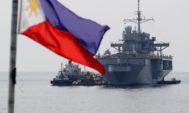
US - Southeast Asia
January — April 2019Strategic Concern Deepens
The choice of two Southeast Asian countries to host US-North Korea summits in the past year has lent some credence to claims that the region serves as the foundation for regional dialogue and cooperation. In early 2019, the region was also the recipient of extra attention when foreign investment in China began to move south, driven by US tariffs on China imposed in late 2018. However, there was little sign that new bilateral trade agreements with the US will materialize in the near term. Meanwhile, greater security cooperation with the US is more likely with the bombing of a cathedral in the southern Philippines in January serving as another harbinger of increased ISIS activity in the region and continued militarization of the South China Sea strengthening the rationale for the US-Philippines alliance but also putting more pressure on it. In political developments, Thai elections in March left questions about whether the military will remain dominant while Indonesian elections in April were less controversial, with incumbent President Joko Widodo retaining power.
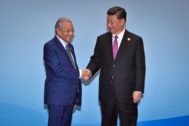
China - Southeast Asia
January — April 2019Beijing Confident Amid US, Regional Challenges
In the first third of 2019, senior Chinese leaders devoted little attention to the South China Sea and China’s relations with Southeast Asian countries. Infrequent comments depicted slow progress in negotiations on a code of conduct in the South China Sea and steady advances with its Belt and Road Initiative (BRI), offering strong economic incentives for closer regional cooperation with China. ASEAN and Southeast Asian claimants adhered to Beijing’s demands to avoid reference to the 2016 UNCLOS tribunal ruling against China’s South China Sea claims and to handle disputes through negotiations without outside interference. Routine complaints about more frequent US freedom of navigation exercises and other US and allied military operations in the South China Sea came from lower-level ministry spokespersons. Little attention was given to growing angst in Southeast Asia that intensified US-China competition compels countries to take sides, a choice undermining strategies that seek benefits from close ties with both the US and China.
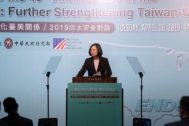
China - Taiwan
January — April 2019Troubling Tensions
The year began with General Secretary Xi Jinping and President Tsai Ing-wen making major statements that underline the fundamental gap between the Chinese Communist Party (CCP) and Taiwan. In the face of Beijing’s continuing pressure on Taiwan, Washington and Taipei took steps to strengthen relations and celebrate the 40th anniversary of the Taiwan Relations Act (TRA). In Congress, members proposed new measures, some of which challenge the established framework for US relations with Taiwan and China. Beijing repeatedly protested these efforts and in April sent two PLA fighters deliberately across the midline of the Taiwan Strait for the first time in 20 years in an ill-defined warning. In Taiwan, maneuvering for the 2020 elections has begun creating a confusing situation with unclear implications for cross-strait and US-Taiwan relations.
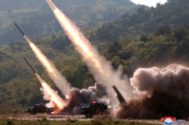
North Korea - South Korea
January — April 2019Grinding to a Halt–Then Kim Pulls the Plug
The inter-Korean peace process that blossomed in 2018 shriveled in early 2019. Pyongyang was slowing the pace even before February’s Kim-Trump summit in Hanoi; since then it has severed almost all contacts with Seoul – whose “meddling” mediation Kim mocked in a speech in April. The North’s ebbing interest can be seen across a range of sectors, including Kim Jong Un’s failure to visit Seoul, high-level talks, the joint liaison office, NGOs, sports exchanges, tension reduction measures at the DMZ, family reunions, medical aid, and more. The DPRK’s missile launches in early May are a further blow. Despite President Moon Jae-in’s efforts to keep a brave face, it is hard to see where North-South relations go from here. Kim may regret dissing the most sympathetic interlocutor he is ever likely to have in Seoul, while Moon needs to think harder about what it will take to make the “irreversible” progress in inter-Korean ties that he craves.

China - Korea
January — April 2019Post-Hanoi Hopes Trapped in a Sino-Korean Smog
China consolidated relations with North Korea through a fourth summit between President Xi Jinping and North Korean leader Kim Jong Un that set the stage for a second US-DPRK summit in Hanoi. This process was further symbolized by the presence of Xi and the senior Chinese leadership at a concert by a flagship North Korean art troupe in Beijing. The no-deal Trump-Kim summit in Hanoi left Kim empty handed and caught the Chinese leadership by surprise, removing any possibility of a fifth Xi-Kim meeting during Kim’s return train ride through China from Vietnam. It left Beijing concerned about the impasse, but hopeful that a mutual compromise might be salvaged. South Korean President Moon Jae-in’s reaction to the Hanoi summit failure had much in common with that of Beijing. But despite the visit to Beijing by Prime Minister Lee Nak-yon, smog hangs over China-ROK relations. Post-THAAD fallout and recriminations toward China resulting from worsening air pollution across the peninsula will set the diplomatic agenda for China-ROK relations through the rest of 2019.
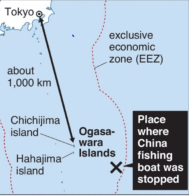
Japan - China
January — April 2019Warm but Wary
Sino-Japanese interactions were less prominent in the early months of 2019, with the Chinese government focused on its Belt and Road Forum and the Japanese with the imperial abdication. Although President Xi Jinping has committed to attending the G20 Summit in Osaka in late June, no date has been set for a state visit to reciprocate Prime Minister Abe’s fall 2018 visit to Beijing. There is speculation that the Chinese are seeking prior commitment to a fifth communiqué, which would be controversial in Japan. The generally cordial atmospherics of lower-level talks belied tensions over territorial disputes, intellectual property rights, and cybersecurity.

Japan - Korea
January — April 2019Hitting an All-Time Low
In the early months of 2019, Japan-South Korea relations have continued a downward spiral. In their dealings with the radar lock-on dispute and a South Korean court ruling on forced laborers, both Seoul and Tokyo responded to the other’s action negatively, reaching the point of suspending all senior-level defense exchanges for the first half of the year. While recent developments may point to yet another period of all-time low in Seoul-Tokyo relations, it is possible that the year 2019 may signify the beginning of a new trend at a deeper level. That is, Seoul and Tokyo do not regard the other as a valued partner in their long-term national security strategy, even when addressing nuclear and missile threats from North Korea. On the Japan-North Korea front, once the biggest regional champion of the US “maximum pressure” campaign, Japan has continued to reckon with the region’s sudden turn toward diplomacy with North Korea and made some policy adjustments for better alliance coordination with the United States.
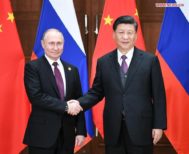
China - Russia
January — April 2019The Story of Two Pivots
After a slow start, there was a burst of diplomatic activity affecting the Russia-China relationship in late-April with Russia focusing on the east for a Russia-DPRK summit in Vladivostok and China focusing on the west with its second Belt and Road Forum. The militaries expanded the scope and substance of their relationship in April with consultations for a third joint missile defense computer simulation to be conducted later this year, several Russian ships joined a naval parade to honor the 70th anniversary of China’s Navy, the start of the Joint Sea 2019 naval exercise, and Defense Minister Wei Fenghe’s visit to Moscow.

Japan - Southeast Asia
May 2018 — April 2019The Emerging Indo-Pacific Era
Japan-Southeast Asia relations have been largely positive over the past year and this trend will likely continue in a foreseeable future. Relations have gained new political traction since early 2018 from Japan’s “Free and Open Indo-Pacific” (FOIP) concept, which has bolstered Japan’s political, economic, and security engagement with Southeast Asia. There are three main positive trends: a synchronization of Indo-Pacific concepts, Japan’s enhanced security commitment to Southeast Asia, and constructive development of bilateral relations between Japan and Southeast Asian countries, particularly Vietnam. However, these trends have been focused on short-term goals and have not yet cemented a strategic relationship between Southeast Asia and Japan. Accomplishing that longer-term goal depends on whether Japan and Southeast Asian states can effectively manage three emerging challenges: reconciling differences with the US approach to the FOIP, expanding economic connectivity, and developing digital infrastructure.